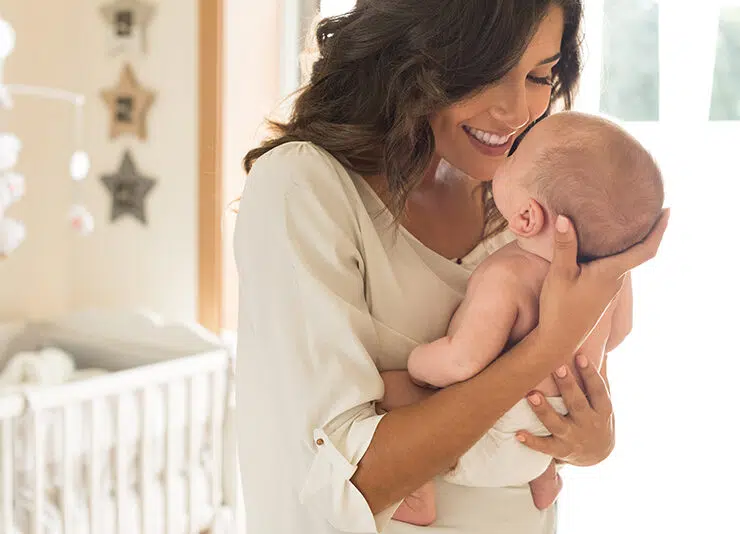

During the first year of life a baby’s vision develops quickly. Did you know that newborns see mostly in shades of grey? After a week they can also detect several colors, and around a month they can recognize the difference between certain colors. “Normal” vision is 20/20 and usually occurs around 6 months of age. However, newborn visual acuity (sharpness) ranges from 20/200 to 20/400 at birth. This is why your newborn can most clearly see things that are less than 12 inches away from their face; which is the perfect range to see your face while holding them. Babies love faces more than any other stimuli and want to look at you!
Before your baby arrives, you can already begin to foster an environment for their visual development by carefully considering colors for their nursery. As an infant’s eyes begin to develop, their retinas can only see the difference between light and dark colors or contrasting color combinations. That said, the contrast between black and white is a perfect option for newborns. If black and white are not your style, try to incorporate contrasting colors into your baby’s room in other ways.
Contrasting color combinations to try:
- Black and white
- Yellow and dark gray
- Navy blue and orange
- Teal and coral
- Bright yellow and hot pink
- Maroon and seafoam green
- Pale yellow and bright purple
- Dark green and red
Bright and contrasting colors and patterns help to promote the healthy development of your baby’s eyes. Visual stimulation helps the retinas grow and supports the optic nerve, which is connected to the brain. However, infant vision development is stimulated by more than just bright colors. Select toys that foster growth of your baby’s eyesight, and hand-eye coordination.
Other ways to stimulate your baby’s eyesight include choosing contrasting patterns such as stripes or polka dots not only in room decorations but also in your child’s toys, blankets, and clothing. Decorate your baby’s room with mobiles and other moving objects. Try to stay within 12 inches of your baby’s face when you are interacting with them. Finally try a simple game of peek-a-boo for babies older than 4 months.
The American Optometric Association also recommends frequently changing the position of your baby’s crib. This simple adjustment stimulates your baby’s vision by giving them a new vantage point of their room. Caring for your baby’s vision through the stimulation of colors, patterns, toys and more is critical for healthy development. Finally, make sure you take prenatal vitamins that include omega 3-DHA for healthy eye development in utero and schedule your baby’s first eye exam between 6-12 months of age.
While all babies should have their first eye exam within the first year of life to check for any vision problems, call your eye doctor sooner if you notice any of the following.
- Your baby’s eyes do not appear to work together after 6 months
- Your baby keeps one eye closed or tilts their head to see
- Your baby has any abnormal crusting or tearing of the eyes

